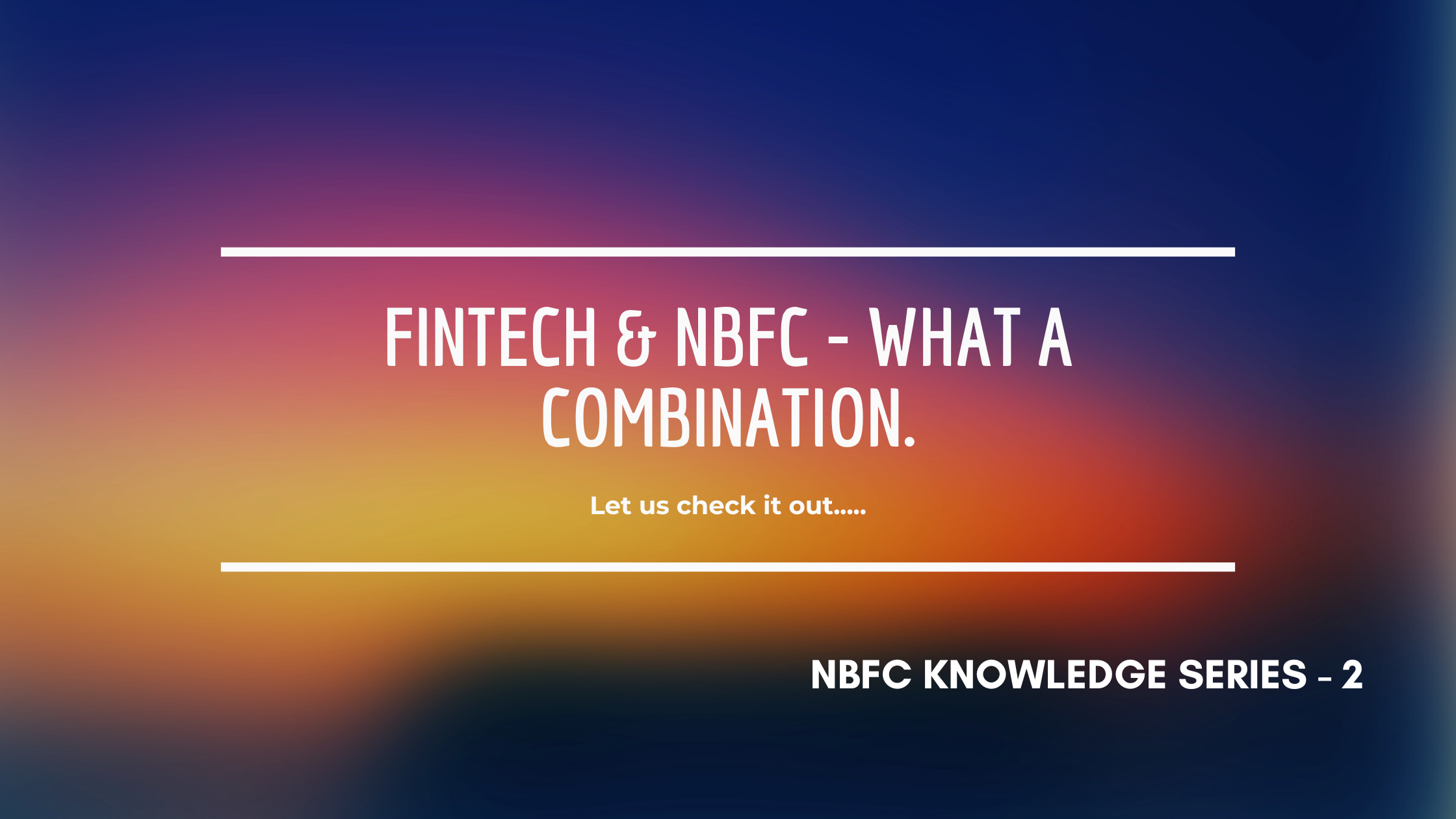Why more and more FinTech look for registering an NBFC with RBI – In recent times…

Executive Summary – In recent times, it has been witnessed that many fintech players in India have approached RBI for registration as a Non-Banking Financial Company (NBFC). Besides the primary purpose of using the technology for digital lending for their own captive purposes, the NBFC vehicle also gives an opportunity to the fintech to leverage the potential of mass outreach with the digital-only model of lending for small and medium ticket-size loans.
Needless to say, India has the highest fintech adoption rate which is around 87% (as research indicates). Also, India with 2nd largest fintech base in the world has huge potential for any kind of regulatory integration which could be a win-win for the entire ecosystem.
Likewise, it is worthwhile to note that RBI recognizes NBFCs as an important pillar of the Indian financial ecosystem. However, we can also not undermine that post the IL&FS crisis, RBI has also tightened the regulatory regime covering specific areas such as corporate governance, liquidity management, etc.
1) Introduction
Before I start the discussion, let us see the above chart which outlines the three key areas of the financial ecosystem which are very important for the growth of the economy:
The facts and figures are a mixed bag. While the fintech growth rate is high and lending opportunities are getting utilized, RBI in the same time in recent past has canceled a large number of NBFC licenses due to non-compliance of regulatory norms such as non-maintenance of NOF, etc.
More and more fintech is approaching RBI for NBFC licenses to avail the advantage of serving their own customers for loan requirements as well as target the larger customer base using the technology to serve the unserved base and of course with better margins.
2) Key indicators why fintech looks for NBFC Registration:
The first and foremost reason for fintech to approach RBI is to get access to an Investment and Credit Company (ICC) license to be able to offer and built their own book for lending rather than dependent on a few partner banks/NBFCs. This also gives the advantage in terms of sharing the margins. With this approach, the customer needs are channelized better. I have been told that there are cities (tier 3 o 6) that are not catered by partner banks and thus having a self-sufficient lending arm as an NBFC is highly advantageous.
The second advantage for fintech to have an NBFC license is to use technology features in lending space with “on the go” risk assessment and loan disbursement. There are advantages to the cost of capital as well. Recently, RBI has issued many NBFC licenses on “Digital Only” mode NBFCs with more of a digital footprint and less of the physical model. Similarly, many NBFCs are working on “phygital” model which is a hybrid of traditional modes of branches with a lot of technology specifications.
The third reason for fintech is to collaborate with banks in co-lending arrangements as a partner rather than just facilitate as a technology service provider.
The fourth most relevant advantage is to disrupt the existing traditional NBFC using advanced tech propositions and has vast outreach and delivery channels.
The last but not least reason could be the light-touch regulatory regime by RBI when managing the NBFCs.
Never to forget, the lending business has always been good in margins as compared to payments or other financial services, and thus, fintech would take this as an opportunity.
3) Is this a viable option – from fintech to NBFC
While we have analyzed the various reasons and advantages of having the NBFC license, let us also look at factors that are the genesis of such a move by fintech. One thing which comes to my mind is the usage of consumer data and analytical tools for approaching prospective customers. Small-ticket to medium-ticket-size loans are still not fully catered to and addressed by Commercial Banks. Rather I would say, Banks are using fintech under collaboration for digital loans for mass outreach.
It is also said that the contribution of NBFCs to the overall balance sheet of banks is around 19% which is going to increase sustainably in the future.
The quality of product, innovation, and delivery strategy adopted by fintech is unparallel as well competitive to the existing set-ups. Hence, the advantage for customers for better customer-centricity and experience.
4) Conclusion:
As there are numerous advantages, likewise there are challenges for fintech to address such as the availability of capital and issues relating to recovery mechanisms.
It has also been seen that compliance with regulatory matters of RBI requires professionals who are thoroughly equipped. Finding out the right manpower also requires thorough engagement by fintech/NBFC.
To conclude, we can form a view that due to the pandemic crisis, there has been a lull in the overall movement of resources but as the market slowly opens, there is an immense opportunity to cater to the need of businesses such as MSMEs, Individuals in a post-pandemic era.
In the end, we should also not forget the support that which regulatory landscape provides for such a business model where digitization is the fulcrum.
Abhishek R Sharma, Regulatory Affairs expert
PS. The content of the article is written based on industry research and personal professional experience.
(source of the chart in the article – RBI, Industry research, publicly available reports on fintech/NBFC. Position as on basis)
- Note – 1ST published on July 27, 2020, later re-published on this website.


COMMENTS